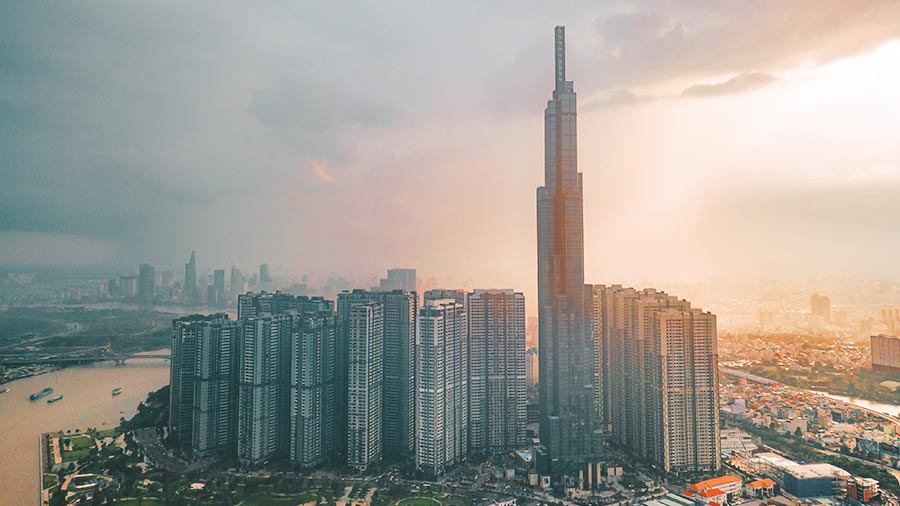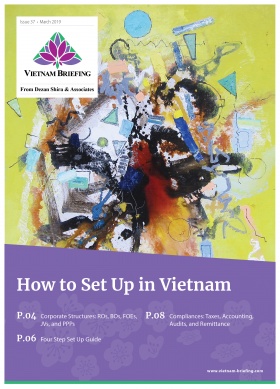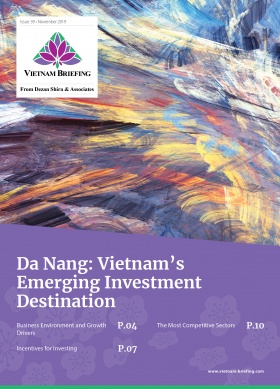Vietnam’s Tourism Sector: Opportunities for Investors in 2020
- Vietnam’s tourism sector is an important pillar of the country’s economic development, contributing six percent to Vietnam’s GDP.
- Vietnam expects to attract approximately 17 to 20 million tourists in 2020.
- To make the sector attractive, the government is working on several reforms including infrastructure projects and the night economy.
Contributing over six percent to Vietnam’s GDP every year, tourism is one of the most important driving forces for Vietnam’s economic development. Taking note of this, in 2011, the government released the “Strategy on Vietnam’s tourism development until 2020, vision to 2030” to provide guidelines for cities and provinces to promote their tourism industry.
As part of the strategy, Vietnam aims to attract 17 to 20 million international visitors in 2020. As of November 2019, Vietnam welcomed 16.3 million international travelers, a 15.4 percent year-on-year (YoY) increase.
Each region’s specific action plan and emerging trend in the industry can help to push the growth even further.
What are the major tourist destinations?
Vietnam’s capital, Hanoi, continues to perform well in 2019. In the first nine months of 2019, Hanoi welcomed 21.5 million visitors, with five million international travelers. This is a ten percent YoY increase. The city is also preparing for the country’s first Formula One Race in April 2020 with the government working on overhauling transportation infrastructure and visa exemption for foreign spectators. It is expected that the number of visitors to Hanoi would see a significant rise thanks to this international event.
Due to the strategy’s aim to give priority to develop other provinces for tourism, Binh Duong has become the second most popular destination in Southern Vietnam, only behind Ho Chi Minh City.
Binh Duong is also promoting the tourism industry with its own “Strategy on Binh Duong’s tourism development until 2020, vision to 2030”. The strategy includes a wide range of all-year-round activities to introduce visitors to Binh Duong’s distinct cuisines, cultures, and people, such as “Spring in Binh Duong”, “Binh Duong’s Street Food 2019”.
Due to such dynamism, Binh Duong has thus attracted over US$2.4 billion foreign investment in the first nine months of 2019, an 81 percent YoY increase. In the same period, there were five million tourists coming to Binh Duong, right behind Ho Chi Minh City’s six million.
Rising medical tourism
Vietnam is emerging as a key player in Southeast Asia’s medical tourism industry. In 2017, 80,000 foreign tourists came to Vietnam for health check-ups and medical treatment, bringing in US$2 billion in total. The medical tourism industry is projected to grow 18 to 20 percent annually.
The main reasons for Vietnam’s attractiveness to foreign patients include its central location in Southeast Asia, political stability, affordability, and relatively good medical care.
Key locations for medical tourism are Phu Quoc, Vung Tau, Nha Trang and Da Nang. Resorts in these regions have tried to integrate facilities to make them more suitable for medical tourism.
Tourism grows but challenges remain
Such significant achievements in the tourism industry helped Vietnam rank 63rd out of 140 countries in the Travel and Tourism Competitiveness Index 2019. Despite an improvement from 2017’s 67th ranking, out of the Index’s 14 criteria, Vietnam still scores low in airport infrastructure, the night economy and human resources.
Night economy
Although night-time activities and services contribute 70 percent to Vietnam’s tourism revenue, most tourist activities operate from 7 am to 5 pm, leaving the night period from 6 pm to 2 am underinvested. In addition, European and North America tourists, who have a large time lag with Vietnam, are unable to explore tourist attractions at night while adjusting to a new time zone.
Therefore, Prime Minister Nguyen Xuan Phuc recently asked the Ministry of Culture, Sports, and Tourism to consider China’s policy to promote and regulate night-time activities.
For example, most of China’s big cities, such as Beijing and Shanghai, operate their subway trains until 12.30 am on Friday and Saturday, while convenience stores remain open 24 hours.
However, the root cause of Vietnam’s underdeveloped night economy lies in the lack of culturally distinct tourism products. While traditional forms of arts only last for one morning, shops at night markets offer generic products like T-shirts and basic souvenirs. This results in the average spending of only US$900 per visitor.
To address this, Hanoi, Ho Chi Minh City, Hue, and Quang Binh provinces have started to experiment with small night-time projects. Hanoi now allows all business activities and night markets in the Old Quarter to operate until 2 am on Friday, Saturday, and Sunday. Quang Binh, a famous beach destination in Central Vietnam, has also taken the initiative to introduce city tours at night by electric cars.
These initiatives present a good opportunity for investment in shopping, leisure and entertainment centers that can assimilate well with the region’s overall landscape.
Infrastructure
Although Vietnam’s investment in infrastructure doubles the global average, airport facilities remain largely neglected.
Overcapacity in all Vietnam’s major airports is the main hindrance for the tourism industry to achieve sustainable growth. In 2019, the number of international visitors coming by flights kept rising, tripling that of road and seaway combined.
According to Airports Corporations of Vietnam (ACV), Ho Chi Minh City’s Tan Son Nhat Airport, which has not undergone any renovation since 2015, operates at a 30 percent overcapacity rate. Hanoi’s Noi Bai International Airport also has a 15 percent overcapacity rate.
The authorities have introduced some short-term measures, such as reducing the number of food and beverage restaurants, rearranging counters and building more waiting lounges, however, more needs to be done.
Long-term measures involve the construction of new airports in key tourist areas to alleviate the burden on infrastructure in big cities.
The government plans to relocate Ho Minh City’s airport (currently in the city center) around 25 miles (40km) east of Ho Chi Minh to Long Thanh in Dong Nai province. The airport is expected to be completed by 2025. State-owned ACV will invest US$1.6 billion, equivalent to 37 percent of total capital, in the project’s first phase. This is part of the government’s plan to invest US$3.7 billion in the aviation sector.
The airport will be capable of serving 100 million passengers and will be much larger than the Noi Bai airport’s capacity of 21 million passengers.
Human Resources
Vietnam’s tourism industry faces a shortage in both the quality and quantity of human resources. While many training programs have been set up, requirements have still not been met. This is particularly true for hotels who struggle to find qualified staff for housekeeping, maintenance, customer service etc. Foreign language and customer skills are important factors can that are required in the hospitality industry. Such skills can only be learned through education and training.
In addition, the tourism industry will require around 40,000 workers per year, however currently, only 15,000 people are studying and majoring in tourism. Despite potential, Vietnam’s tourism productivity ranks the lowest in the region at US$3,477 person a year, far less than Thailand and Singapore.
To address these gaps, the government will need to encourage and train workers for the industry if it wants to address the increase in international arrivals. Thankfully, the government’s strategic vision focuses on the training of human resources as one of the factors to help meet its goals of promoting tourism and realizing its potential.
Future growth
Vietnam’s share of total arrivals to Southeast Asia has been increasing over the past three years, reaching 14 percent in 2018. However, challenges in terms of infrastructure and business model remain. As long as decisive measures for those issues are taken, Vietnam is in a good position to utilize its diverse natural and cultural assets to be able to compete with other ASEAN countries.
About Us
Vietnam Briefing is produced by Dezan Shira & Associates. The firm assists foreign investors throughout Asia from offices across the world, including in Hanoi and Ho Chi Minh City. Readers may write to vietnam@dezshira.com for more support on doing business in Vietnam.
- Previous Article Vietnam’s Auction Plan for Solar Energy
- Next Article Vietnam’s Real Estate Market: 3 Growth Drivers in 2020































